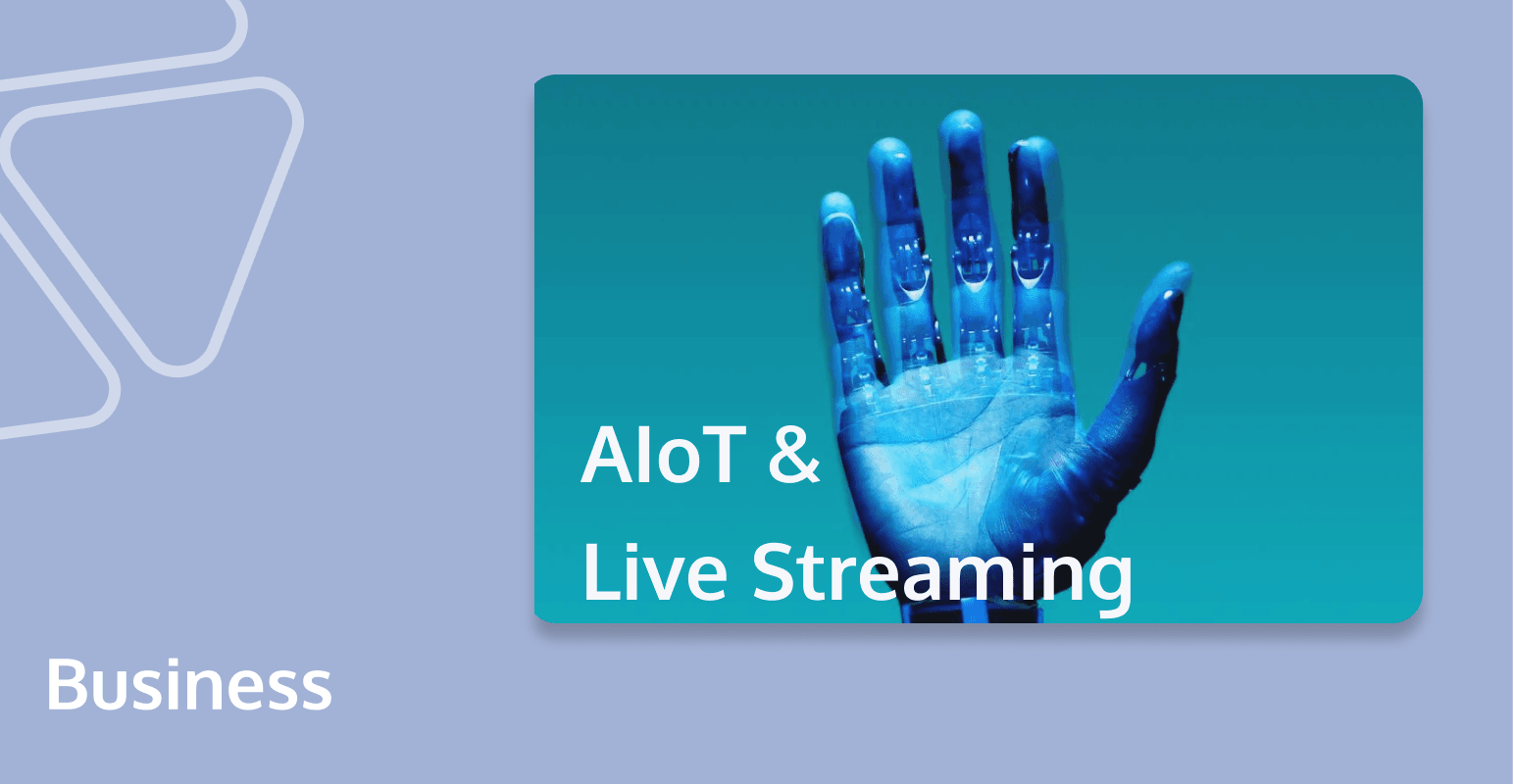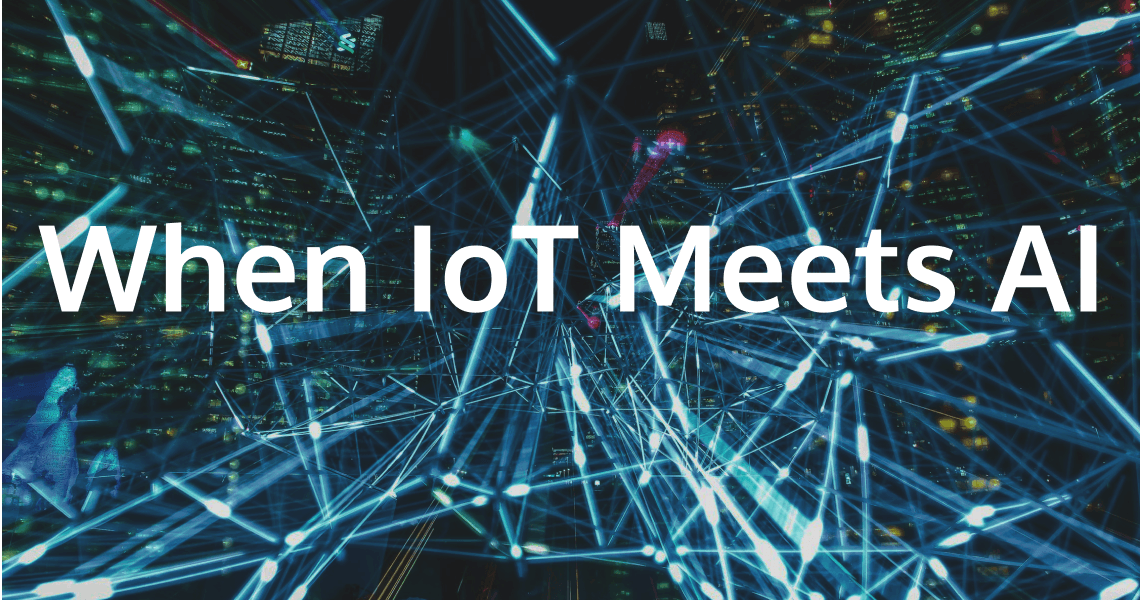
What is AIoT?
AIoT stands for Artificial Intelligence of Things, representing the convergence of AI technologies with existing IoT infrastructure. In simpler terms, it is the integration of intelligent algorithms and machine learning capabilities into everyday objects, creating a more efficient and responsive environment. Through the seamless communication and analysis of vast amounts of data, AIoT ushers in a new era of smart IoT devices capable of making informed decisions and learning from user interactions.

Transforming Industries Across the Board:
- Healthcare: AIoT ensures real-time monitoring of health parameters, enabling healthcare professionals to analyze and predict health issues. Smart wearable devices powered by AIoT can track vital signs and alert medical staff in emergency situations.
- Transportation: Self-driving cars powered by AIoT systems have the potential to revolutionize commuting, enhance road safety, and optimize traffic management, reducing congestion and emissions.
- Agriculture: AIoT solutions can monitor soil moisture, temperature, and humidity to optimize irrigation systems and automate crop management, ensuring higher yields and minimizing environmental impact.
- Manufacturing: Traditional factories can transform into smart factories through AIoT. Intelligent robots and machines can predict maintenance needs, improve production efficiency, and streamline supply chain management.
- Smart Cities: AIoT plays a crucial role in creating sustainable and livable cities. Smart grids, intelligent traffic systems, and automated waste management help optimize resource allocation, reduce energy consumption, and enhance public safety.
AIoT's Impact on Enhancing Live Streaming
- Enhanced User Experiences:
Combining AIoT with live streaming has significantly improved user experiences by providing personalized and interactive content. AI algorithms analyze viewer preferences and behaviors to offer tailored content recommendations, ensuring that users are engaged with the most relevant content. Additionally, AIoT enables real-time interaction with live streamers, allowing viewers to actively participate through chatbots, polls, and virtual reality experiences.
- Unparalleled Content Delivery:
AIoT-powered live streaming platforms have revolutionized content creation and delivery. With the help of AI algorithms, live streamers can seamlessly integrate IoT devices into their broadcasts, enhancing visual effects, and producing high-quality content. From multiple camera angles to dynamic graphics overlays, AIoT enables live streamers to take their production value to the next level, offering viewers an immersive and engaging experience.
- Smart Automation:
AIoT integration in live streaming eliminates mundane tasks and automates various processes, saving both time and effort for content creators. AI algorithms can control IoT devices such as cameras, lighting systems, and audio equipment, ensuring optimal settings and reducing the need for manual adjustments. This seamless fusion streamlines the production process, allowing live streamers to focus on delivering captivating and valuable content.
- Real-time Insights and Analytics:
Traditionally, understanding viewers' preferences and behaviors required extensive data analysis after the live stream. However, with AIoT, live streaming platforms can track and analyze real-time data, offering valuable insights into viewer engagement. By gathering data on viewers' reactions, comments, and interactions, AIoT-powered analytics provide live streamers with actionable information to improve their content strategy, audience engagement, and monetization opportunities.
- Monetization Opportunities:
The integration of AIoT and live streaming has presented exciting monetization opportunities for content creators and streaming platforms. Through AI-powered advertising algorithms, targeted ads can be displayed during live streams, ensuring that viewers are shown relevant content that aligns with their interests. Furthermore, AIoT allows for seamless integration with e-commerce platforms, enabling content creators to showcase and sell products within their live streams, fostering a new wave of interactive shopping experiences.
Live Streaming's Impact on AIoT Growth
- Revolutionizing Data Collection and Analysis:
Data is the lifeblood of AIoT systems, and live streaming enhances this crucial aspect. By enabling the real-time transmission of massive amounts of data, live streaming technology makes it possible to collect and analyze diverse inputs from IoT devices. This real-time data stream helps AI algorithms to identify patterns, gather insights, and make intelligent decisions.
- Enabling Real-Time Response:
Live streaming provides a mechanism for AIoT systems to respond to events as they happen. By constantly monitoring and processing the streaming data, AI algorithms can trigger instant actions, mitigating potential risks, or seizing new opportunities. This capability enables businesses to leverage AIoT in scenarios that require quick reactions, such as predictive maintenance, security monitoring, or smart transportation.
- Enhancing Remote Monitoring and Control:
Live streaming empowers AIoT applications by extending their reach beyond physical boundaries. With the ability to stream real-time data from remote environments, AIoT systems can enable seamless monitoring, control, and decision-making from anywhere in the world. This opens up new possibilities for healthcare, agriculture, and industrial sectors, where critical assets often demand remote supervision.
- Facilitating Collaborative Intelligence:
Live streaming technology fosters collaborative intelligence by enabling multiple AIoT devices to interact and exchange data in real-time. These interconnected systems, by leveraging live streaming, can collectively analyze and respond to complex situations more efficiently. This collaborative intelligence unlocks new opportunities in smart cities, smart homes, and autonomous vehicles, where diverse devices work together to improve efficiency, safety, and sustainability.
- Redefining Customer Experience:
Live streaming's interactive nature can revolutionize customer engagement through AIoT applications. By allowing personalized and immersive experiences, AI-driven smart devices can quickly adapt to individual preferences and provide spot-on recommendations. For example, in smart retail environments, live streaming-powered AIoT systems can offer virtual shopping assistants and real-time product demonstrations, revolutionizing the buyer's journey.
The Confluence of AIoT and Cloud Computing
AIoT devices generate an enormous amount of data, and cloud computing provides the necessary infrastructure to store, process, and analyze this data in real-time. By leveraging the cloud, AIoT devices can tap into vast computational resources, enabling advanced data analytics, machine learning algorithms, and predictive analytics to drive unparalleled innovation.
- Scalability and Flexibility:
One of the key advantages of cloud computing in the context of AIoT development is its inherent scalability and flexibility. Organizations can scale their AIoT deployments seamlessly based on demand, without worrying about the limitations of on-premises infrastructure. Cloud platforms not only offer virtually unlimited storage capacity but also allow developers to access cutting-edge technologies and frameworks, facilitating rapid prototyping and deployment of AIoT solutions.
- Enhanced Connectivity and Collaboration:
Cloud computing acts as a catalyst for enhancing connectivity and collaboration within the AIoT ecosystem. By leveraging cloud-based platforms, multiple AIoT devices can communicate and exchange data effectively, driving collective intelligence. The cloud's ability to aggregate and process data from various sources empowers AIoT devices to make informed decisions and take actions in real-time, fostering a truly interconnected ecosystem.
- Cost Optimization and Accessibility:
Cloud computing promotes cost optimization for AIoT development, making it more accessible to organizations of all sizes. By eliminating the need for upfront investments in dedicated infrastructure, organizations can leverage cloud-based services on a pay-as-you-go model, significantly reducing overall expenses. This democratization of resources and tools ensures that small and medium-sized enterprises can also participate in the AIoT revolution.
- Security and Privacy Concerns:
While the benefits of cloud computing for AIoT development are undeniable, it is crucial to address the security and privacy concerns associated with these technologies. As AIoT devices collect and transmit sensitive data, cloud computing platforms must prioritize robust security measures to safeguard this information from potential breaches. Encrypted data transmission, authentication protocols, and strict access control mechanisms play a pivotal role in ensuring data integrity and protecting user privacy.
Tencent RTC: Bridging Real-Time Communication
Built upon the robust foundation of Cloud Infrastructure, Tencent RTC leverages key underlying services such as network infrastructure and storage solutions.
Tencent RTC caters to a diverse range of applications, empowering developers to seamlessly integrate real-time communication capabilities into their platforms. From video conferencing to online education and live streaming, Tencent RTC thrives as a testament to Tencent's commitment to providing cutting-edge solutions within the dynamic realm of cloud computing.
Key Features:
- Global Reach: With a presence in over 200 countries and regions, Tencent RTC ensures worldwide accessibility, fostering connectivity on a global scale.
- Low Latency Excellence: Experience real-time interactions with minimal delays, thanks to Tencent RTC's advanced technology that prioritizes low-latency communication.
- AI-Powered Enhancements: Benefit from crystal-clear audio with AI-powered noise cancellation, providing a distraction-free environment for your conversations.
- Cross-Platform Compatibility: From iOS and Android to Windows, macOS, and more, Tencent RTC offers cross-platform support, enabling users to connect seamlessly across devices.
- Security and Compliance: Certified with ISO standards, Tencent RTC prioritizes data security and compliance, instilling confidence in users through a secure communication environment.
Conclusion:
In simple terms, exploring the mix of AIoT, live streaming, and cloud computing shows a world full of chances and progress that will impact the future of technology. As we move through this dynamic mix, the smooth blend of AIoT and live streaming isn't just a cool tech thing; it's like a spark that's changing how we experience things, going beyond the usual limits in the digital world.
Tencent RTC offers robust tools for crafting immersive and smooth video experiences. Whether you're involved in low-latency live streaming, adaptive bitrate streaming, or advanced analytics, the Tencent RTC Live SDK enables developers to mold exceptional video communication and streaming applications.
If you have any questions or need assistance, our support team is always ready to help. Please feel free to Contact Us or join us in Telegram.


